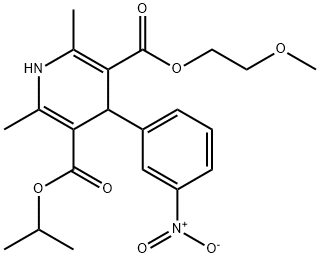PRODUCT Properties
| Melting point: | 119-1210C |
| alpha | D20 -118.8° (c = 1.378 in ethanol) |
| Boiling point: | 429.65°C (rough estimate) |
| Density | 1.0662 (rough estimate) |
| refractive index | 1.5022 (estimate) |
| storage temp. | Sealed in dry,Room Temperature |
| solubility | ≥14.37 mg/mL in DMSO; ≥14.43 mg/mL in H2O with gentle warming; ≥45 mg/mL in EtOH with gentle warming |
| form | Powder |
| pka | pKa 8.32 (Uncertain) |
| color | White to off-white |
| CAS DataBase Reference | 357-70-0(CAS DataBase Reference) |
| NIST Chemistry Reference | Galantamin(357-70-0) |
Description and Uses
Galantamine is an Amaryllidaceae alkaloid which is first obtained from the plant of
snowdrop (Galanthus nivalis), and nowadays, it’s extracted from the plants of
Narcissus and Galanthus species or obtained from chemosynthesis. In many
areas in Europe such as Bulgaria, eastern Turkey, and the Caucasus, the plants of
Galanthus are native species. But its earliest pharmaceutical applications are seldom known. Plaitakis and Duvoisin hypothesized that “moly” in ancient Homer’s
epic might be snowdrops. In Homer’s epic Odyssey, “moly” was used as an antidote
by Odysseus against Circe’s poisonous drugs. To be used as an antidote may be the
plants of Galanthus’ oldest medicinal records. But there is not much evidence for
that. There is little evidence of the traditional application of the plants of
Galanthus, and it is certain that until the Second World War, the plants of Galanthus
and other genera of Amaryllidaceae were not frequently used in European drugs
Italian scholar Iannello studied Pancratium illyricum L., an Amaryllidaceae species endemic to Sardinia, and isolated a new galantamine-type alkaloid in its leaves.
This new galantamine-type compound exhibited a pronounced in?vitro AChE inhibitory activity (IC50? =? 3.5±1.1? μM) in comparison with the reference standard
galantamine hydrobromide (IC50?=?1.5±0.2?μM)
Galantamine is approved for the treatment of mild-to-moderate AD.It is a reversible specific inhibitor of AChE,and in addition it modulates central nicotinic receptors toincrease cholinergic neurotransmission.
Safety
| Symbol(GHS) |   GHS09,GHS06 |
| Signal word | Danger |
| Hazard statements | H319-H373-H410-H317-H315-H301+H331 |
| Precautionary statements | P261-P272-P280-P302+P352-P333+P313-P321-P363-P501-P260-P314-P501-P264-P280-P302+P352-P321-P332+P313-P362-P264-P280-P305+P351+P338-P337+P313P-P273-P391-P501 |
| Hazardous Substances Data | 357-70-0(Hazardous Substances Data) |
| Toxicity | LD50 intraperitoneal in mouse: 10mg/kg |





